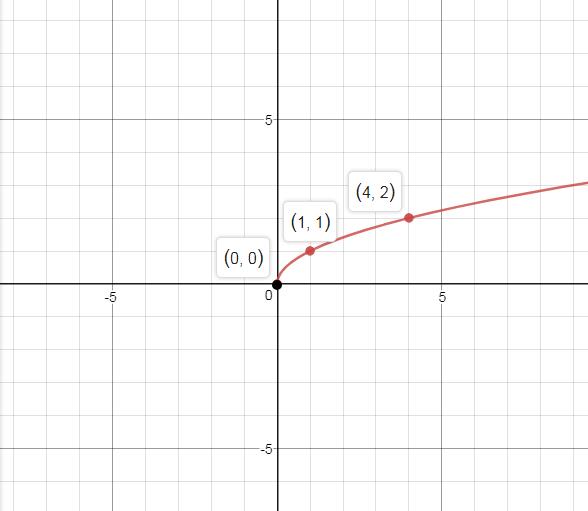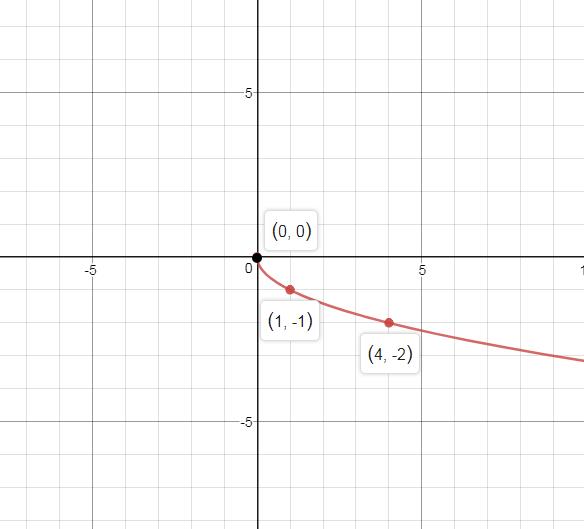Problem 1AYU Problem 2AYU Problem 3AYU Problem 4AYU Problem 5AYU Problem 6AYU Problem 7AYU: In problems 7-18, match each graph to one of the following functions: A. y= x 2 +2 B. y=- x 2 +2 C.... Problem 8AYU: In problems 7-18, match each graph to one of the following functions: A. y= x 2 +2 B. y=- x 2 +2 C.... Problem 9AYU: In problems 7-18, match each graph to one of the following functions: A. y= x 2 +2 B. y=- x 2 +2 C.... Problem 10AYU: In problems 7-18, match each graph to one of the following functions: A. y= x 2 +2 B. y=- x 2 +2 C.... Problem 11AYU: In problems 7-18, match each graph to one of the following functions: A. y= x 2 +2 B. y=- x 2 +2 C.... Problem 12AYU: In problems 7-18, match each graph to one of the following functions: A. y= x 2 +2 B. y=- x 2 +2 C.... Problem 13AYU: In problems 7-18, match each graph to one of the following functions: A. y= x 2 +2 B. y=- x 2 +2 C.... Problem 14AYU: In problems 7-18, match each graph to one of the following functions: A. y= x 2 +2 B. y=- x 2 +2 C.... Problem 15AYU: In problems 7-18, match each graph to one of the following functions: A. y= x 2 +2 B. y=- x 2 +2 C.... Problem 16AYU: In problems 7-18, match each graph to one of the following functions: A. y= x 2 +2 B. y=- x 2 +2 C.... Problem 17AYU: In problems 7-18, match each graph to one of the following functions: A. y= x 2 +2 B. y=- x 2 +2 C.... Problem 18AYU: In problems 7-18, match each graph to one of the following functions: A. y= x 2 +2 B. y=- x 2 +2 C.... Problem 19AYU: In Problem 19-26, write the function whose graph is the graph of y= x 3 , but is: Shifted to the... Problem 20AYU: In Problem 19-26, write the function whose graph is the graph of y= x 3 , but is: Shifted to the... Problem 21AYU: In Problem 19-26, write the function whose graph is the graph of y= x 3 , but is: Shifted up 4... Problem 22AYU: In Problem 19-26, write the function whose graph is the graph of y= x 3 , but is: Shifted down 4... Problem 23AYU: In Problem 19-26, write the function whose graph is the graph of y= x 3 , but is: Reflected about... Problem 24AYU: In Problem 19-26, write the function whose graph is the graph of y= x 3 , but is: Reflected about... Problem 25AYU: In Problems, write the function whose graph is the graph of but is:
Vertically stretched by a... Problem 26AYU: In Problem 19-26, write the function whose graph is the graph of y= x 3 , but is: Horizontally... Problem 27AYU: In Problem 27-30, find the function that is finally graphed after each of the following... Problem 28AYU: In Problem 27-30, find the function that is finally graphed after each of the following... Problem 29AYU: In Problems 2932, find the function that is finally graphed after each of the following... Problem 30AYU: In Problem 27-30, find the function that is finally graphed after each of the following... Problem 31AYU: In Problem 27-30, find the function that is finally graphed after each of the following... Problem 32AYU: In Problem 27-30, find the function that is finally graphed after each of the following... Problem 33AYU: In Problem 27-30, find the function that is finally graphed after each of the following... Problem 34AYU: In Problem 27-30, find the function that is finally graphed after each of the following... Problem 35AYU Problem 36AYU Problem 37AYU Problem 38AYU Problem 39AYU: In Problems 39-62, graph each function using the techniques of shifting, compressing, stretching,... Problem 40AYU: In Problems 39-62, graph each function using the techniques of shifting, compressing, stretching,... Problem 41AYU: In Problems graph each function using the techniques of shifting, compressing, stretching, and/or... Problem 42AYU: In Problems 3760, graph each function using the techniques of shifting, compressing, stretching,... Problem 43AYU: In Problems 39-62, graph each function using the techniques of shifting, compressing, stretching,... Problem 44AYU: In Problems 39-62, graph each function using the techniques of shifting, compressing, stretching,... Problem 45AYU: In Problems 39-62, graph each function using the techniques of shifting, compressing, stretching,... Problem 46AYU: In Problems 39-62, graph each function using the techniques of shifting, compressing, stretching,... Problem 47AYU: In Problems 39-62, graph each function using the techniques of shifting, compressing, stretching,... Problem 48AYU: In Problems 39-62, graph each function using the techniques of shifting, compressing, stretching,... Problem 49AYU: In Problems 39-62, graph each function using the techniques of shifting, compressing, stretching,... Problem 50AYU: In Problems 39-62, graph each function using the techniques of shifting, compressing, stretching,... Problem 51AYU: In Problems 39-62, graph each function using the techniques of shifting, compressing, stretching,... Problem 52AYU: In Problems 39-62, graph each function using the techniques of shifting, compressing, stretching,... Problem 53AYU: In Problems 39-62, graph each function using the techniques of shifting, compressing, stretching,... Problem 54AYU: In Problems 39-62, graph each function using the techniques of shifting, compressing, stretching,... Problem 55AYU: In Problems 39-62, graph each function using the techniques of shifting, compressing, stretching,... Problem 56AYU: In Problems 39-62, graph each function using the techniques of shifting, compressing, stretching,... Problem 57AYU: In Problems 39-62, graph each function using the techniques of shifting, compressing, stretching,... Problem 58AYU: In Problems 39-62, graph each function using the techniques of shifting, compressing, stretching,... Problem 59AYU: In Problems 39-62, graph each function using the techniques of shifting, compressing, stretching,... Problem 60AYU: In Problems 39-62, graph each function using the techniques of shifting, compressing, stretching,... Problem 61AYU Problem 62AYU Problem 63AYU: In Problems 63-66, the graph of a function f is illustrated. Use the graph of f as the first step... Problem 64AYU: In Problems 63-66, the graph of a function f is illustrated. Use the graph of f as the first step... Problem 65AYU: In Problems 63-66, the graph of a function f is illustrated. Use the graph of f as the first step... Problem 66AYU: In Problems 63-66, the graph of a function f is illustrated. Use the graph of f as the first step... Problem 67AYU: In Problems 69-76, complete the square of each quadratic expression. Then graph each function using... Problem 68AYU: In Problems 69-76, complete the square of each quadratic expression. Then graph each function using... Problem 69AYU: In Problems 69-76, complete the square of each quadratic expression. Then graph each function using... Problem 70AYU: In Problems 69-76, complete the square of each quadratic expression. Then graph each function using... Problem 71AYU: In Problems 69-76, complete the square of each quadratic expression. Then graph each function using... Problem 72AYU: In Problems 69-76, complete the square of each quadratic expression. Then graph each function using... Problem 73AYU: In Problems 69-76, complete the square of each quadratic expression. Then graph each function using... Problem 74AYU: In Problems 69-76, complete the square of each quadratic expression. Then graph each function using... Problem 75AYU Problem 76AYU Problem 77AYU Problem 78AYU Problem 79AYU Problem 80AYU Problem 81AYU Problem 82AYU Problem 83AYU Problem 84AYU Problem 85AYU Problem 86AYU Problem 87AYU Problem 88AYU Problem 89AYU Problem 90AYU Problem 91AYU Problem 92AYU Problem 93AYU Problem 94AYU format_list_bulleted



 Calculus: Early TranscendentalsCalculusISBN:9781285741550Author:James StewartPublisher:Cengage Learning
Calculus: Early TranscendentalsCalculusISBN:9781285741550Author:James StewartPublisher:Cengage Learning Thomas' Calculus (14th Edition)CalculusISBN:9780134438986Author:Joel R. Hass, Christopher E. Heil, Maurice D. WeirPublisher:PEARSON
Thomas' Calculus (14th Edition)CalculusISBN:9780134438986Author:Joel R. Hass, Christopher E. Heil, Maurice D. WeirPublisher:PEARSON Calculus: Early Transcendentals (3rd Edition)CalculusISBN:9780134763644Author:William L. Briggs, Lyle Cochran, Bernard Gillett, Eric SchulzPublisher:PEARSON
Calculus: Early Transcendentals (3rd Edition)CalculusISBN:9780134763644Author:William L. Briggs, Lyle Cochran, Bernard Gillett, Eric SchulzPublisher:PEARSON Calculus: Early TranscendentalsCalculusISBN:9781319050740Author:Jon Rogawski, Colin Adams, Robert FranzosaPublisher:W. H. Freeman
Calculus: Early TranscendentalsCalculusISBN:9781319050740Author:Jon Rogawski, Colin Adams, Robert FranzosaPublisher:W. H. Freeman
 Calculus: Early Transcendental FunctionsCalculusISBN:9781337552516Author:Ron Larson, Bruce H. EdwardsPublisher:Cengage Learning
Calculus: Early Transcendental FunctionsCalculusISBN:9781337552516Author:Ron Larson, Bruce H. EdwardsPublisher:Cengage Learning




